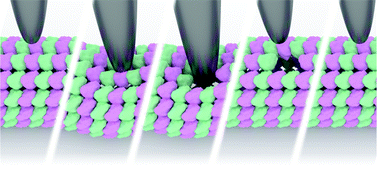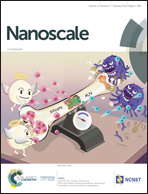Microtubule self-healing and defect creation investigated by in-line force measurements during high-speed atomic force microscopy imaging†
Abstract
Microtubules are biopolymers composed of tubulin and play diverse roles in a wide variety of biological processes such as cell division, migration and intracellular transport in eukaryotic cells. To perform their functions, microtubules are mechanically stressed and, thereby, susceptible to structural defects. Local variations in mechanical properties caused by these defects modulate their biological functions, including binding and transportation of microtubule-associated proteins. Therefore, assessing the local mechanical properties of microtubules and analyzing their dynamic response to mechanical stimuli provide insight into fundamental processes. It is, however, not trivial to control defect formation, gather mechanical information at the same time, and subsequently image the result at a high temporal resolution at the molecular level with minimal delay. In this work, we describe the so-called in-line force curve mode based on high-speed atomic force microscopy. This method is directly applied to create defects in microtubules at the level of tubulin dimers and monitor the following dynamic processes around the defects. Furthermore, force curves obtained during defect formation provide quantitative mechanical information to estimate the bonding energy between tubulin dimers.



 Please wait while we load your content...
Please wait while we load your content...